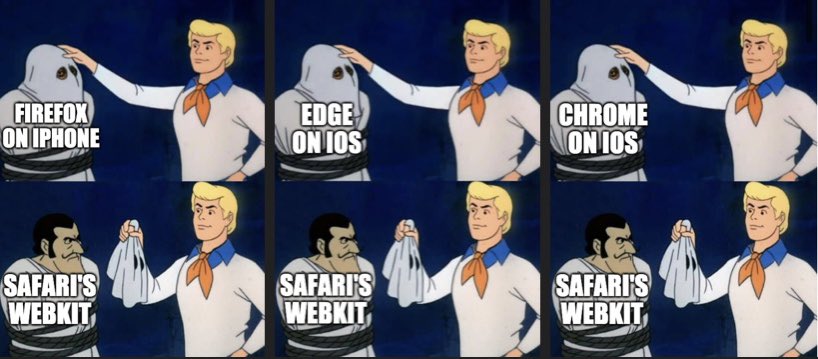…I am not saying Apple’s approach is wrong. What Apple is doing is important too, and I applaud the work Apple has been doing in improving privacy on the web.
But it can’t be the only priority. Just imagine what the web would look like if every browser would have taken that approach 20 years ago.
Actually, no, don’t imagine it all. Just think back at Internet Explorer 6; that is what the web looked like 20 years ago.
…
There can only be one proper solution: Apple needs to open up their App Store to browsers with other rendering engines. Scrap rule 2.5.6 and allow other browsers on iOS and let them genuinely compete.
As a reminder, Safari is the only web browser on iOS. You might have been fooled to think otherwise by the appearance of other browsers in the App Store or perhaps by last year’s update that made it possible at long last to change the default browser, but it’s all an illusion. Beneath the mask, all browsers on iOS are powered by Safari’s WebKit, or else they’re booted from the App Store.
Neils’ comparison to Internet Explorer 6 is a good one, but as I’ve long pointed out, there’s a big and important difference between Microsoft’s story during the First Browser War and Apple’s today:
- Microsoft bundled Internet Explorer with Windows, raising the barrier to using a different web browser, which a court ruled as monopolistic and recommended that Microsoft be broken into smaller companies (this recommendation was scaled back on appeal).
- Apple bundle Safari with iOS and prohibit the use of any other browser’s rendering engine on that platform, preventing the use of a different web browser. Third-party applications have been available for iOS – except, specifically, other browser rendering engines and a handful of other things – for 13 years now, but it still seems unlikely we’ll see an antitrust case anytime soon.
Apple are holding the Web back… and getting away with it.

0 comments